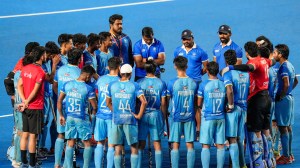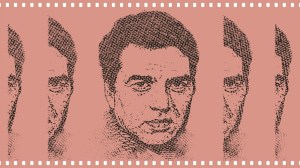Assam’s ‘secret killings’: Tarun Gogoi plays 15-yr-old hand again
The victim, an ASTC yard master, turned out to be Dimbeswar Rajkonwar, elder brother of ULFA chairman Arabinda Rajkhowa.
 Assam Chief Minister Tarun Gogoi
Assam Chief Minister Tarun Gogoi
In the evening of August 11, 1998, two motorcycle-borne assailants shot dead a man at the Assam State Transport Corporation (ASTC) bus station at Chowkidingee in Dibrugarh. The victim, an ASTC yard master, turned out to be Dimbeswar Rajkonwar, elder brother of ULFA chairman Arabinda Rajkhowa.
A little over five hours later, around 12.40 am, retired schoolteacher Kali Kanta Das heard gunshots and vehicles close to his home in Nij Juluki village in Nalbari district’s Barama police station area. Emerging at dawn, Das found four members of the family nextdoor lying dead: Phuleswari Das, the mother of ULFA publicity secretary Mithinga Daimary; Dr Dharani Dhar Das, Daimary’s elder brother; Latika Das, Daimary’s younger sister; and Rupjyoti Das, his pregnant sister-in-law.
***
This was the beginning. For the next two years or so, Assam was rocked by a series of similar killings, almost all following a definite pattern, the victims mostly the close kin of ULFA leaders. The local media termed it gupta hatya, and the opposition Congress launched a massive campaign against the alleged extra-judicial killings by the AGP government. Gupta hatya — secret killings — was the Congress’s key issue in the 2001 Assembly election, and won the party a crushing victory over the AGP.
[related-post]
Within months of coming to power, the Tarun Gogoi government set up a judicial inquiry under retired Gauhati High Court Justice Meera Sarma into six cases in which 11 persons had been killed. In October 2003, however, Justice Meera Sarma pulled out “on personal grounds”, following which a fresh commission was appointed under another retired HC judge, Justice J N Sarma.
Justice J N Sarma’s 31-page report in August 2005 failed to identify the culprits beyond saying “they were all cases of revenge killings”. Justice Sarma also observed that “it is not possible always to solve each and every crime”, and while “some crimes may always remain unsolved, that itself cannot be a ground to condemn the police”.
Three weeks after the submission of this report, on August 22, 2005, an obviously unsatisfied government instituted a third inquiry, this time under retired Justice K N Saikia. The Saikia Commission, which was initially given the same six cases that were given to the Sarma Commission, was subsequently handed over another 29 cases, some also relating to kidnapping and attempted murder.
The Saikia Commission submitted its first report in exactly a year, on August 21, 2006. Three supplementary reports followed, the last coming on August 7, 2007. The Saikia Commission report did not name any individual, but had enough references and indications holding then Chief Minister Prafulla Kumar Mahanta by and large responsible.
“All the killings in these (first seven) cases have been found to have been remote orchestrated; and these were caused after each of the ULFA families, or ULFA-related families failed to persuade their ULFA members or relatives to come for the peace talks… The then Chief Minister himself got press appeals to persuade them, published by different literary organizations of Assam… Having failed to receive the desired response, the conspiracy to kill members of those ULFA and ULFA-related families must have been hatched in secrecy. All those who orchestrated in the effort to bring ULFA members to the peace talks must have also been the co-conspirators in the killings,” the Saikia Commission said.
***
The Saikia Commission also identified some “common” characteristics in most of the cases “to justify a finding of a general plan of ‘ulfocide’, i.e., killing of ULFAs, and their families and relatives”. Among 16 commonalities it identified were the facts that each killing involved an ULFA, or ULFA-related family, and that investigations mostly fizzled out or ended in ‘Final Reports’ with no chargesheets being submitted; that all killings, with the exception of one, were carried out in the dead of the night, by Assamese-speaking killers armed with sophisticated weapons normally used by police or the military, wearing black wrappers or caps, and riding mostly Maruti Gypsys and vans without registration numbers; that there was police patrolling in the area before and after the killings but never at the time it was required; and that modern or scientific methods were never employed in the investigation of the killings.
The role of the Army, the Commission said, was ubiquitous. “By Army we mean the Armed Forces of the Union deployed in Assam in aid of civil power. Here was lurking evidence of Police-SULFA nexus (SULFA standing for Surrendered ULFA) in the killings, some of the latter being constituted into an extra-constitutional authority and used as executioners,” it said.
“The manner of planning and execution of the act of killing shows that there must also have been some authoritative assurance of safety to the killers after the act was completed,” the report said. The Saikia Commission, however, did not pinpoint responsibility, blaming the absence of effective direct evidence.
Elaborating on its observation that there was “remote orchestration” of the killings, the Commission said: “The then remote might be at Home. These conclusions are based on the similarities of the cases in all respects, which could not be so unless there was remote orchestration from higher authorities. The remote was supposed to be at Home.”
In the third supplementary report, the Commission said: “It may be also noted that this third group of 10 cases also reveal some individual SULFAs being boldly named by respective parties in course of evidence, thereby fully confirming the unholy nexus between the then concerned Police authorities and concerned SULFAs, in secrecy, by the then Home Minister, in flagrant violation of their Constitutional, Legal and Human Rights. There is enough evidence to show that the then Home Minister was at the helm of these extra-Constitutional killings.”
The Home portfolio was then held by Chief Minister Prafulla Kumar Mahanta.
***
Chief Minister Gogoi never initiated action against his predecessor on the basis of the Saikia Commission’s observations. He continues to insist that he put the case in the people’s court. “The people’s court is the best court. We have put the case in the people’s court,” Gogoi has said on many occasions in the past eight years.
He has also dragged in the BJP and the then union Home Minister L K Advani into the “secret killings” controversy. “Mahanta was not alone. He definitely had the blessings of union Home Minister Advani,” the Chief Minister has said on many occasions. In this election too, Gogoi is referring to the alleged AGP-BJP hand in the “secret killings”. In 2001, the ULFA too had joined the chorus against Mahanta, but this time around, the anti-talk faction of the rebel group has targeted only one BJP candidate — former ULFA Bhaskar Sarma, accusing him of involvement in the “secret killings.”
***
Prafulla Mahanta continues to deny involvement in the killings — an issue over which even his colleagues had abandoned him. On November 15, 2007, hours after Gogoi tabled the Saikia Commission reports in the state Assembly, Mahanta had issued a statement accusing Gogoi of acting to manipulate the truth.
“The Gogoi government not only deliberately delayed the process of enquiry by the Commission on one plea or the other, be it by denying facilities to the Commission, or frequently changing the Judges so that the truth can be manipulated by him to suit his political agenda and not to unearth the truth as they had committed to the people before the 2001 polls,” Mahanta had said.
Fifteen years on, in another election, as Gogoi seeks a fourth straight term, the issue of the “secret killings” remains alive.
- 01
- 02
- 03
- 04
- 05






































